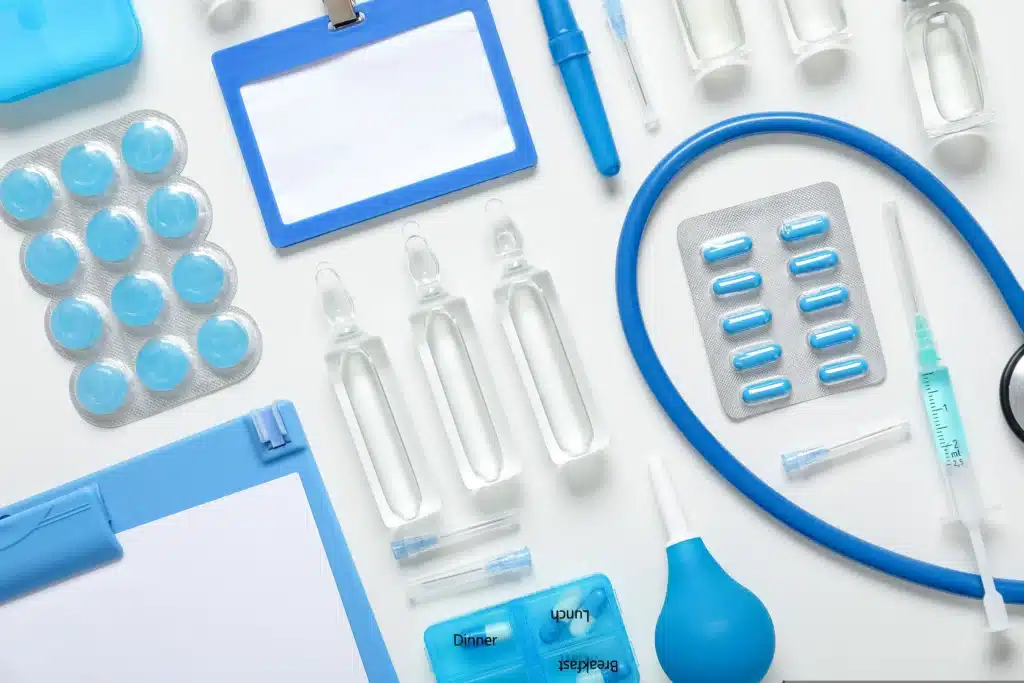What are Extractables and Leachables?

Extractables are defined as those chemicals that can be removed from a material with a challenge solvent or other extreme conditions. Leachables are compounds that move from a package or delivery system to the product under normal conditions.
Extractable and leachable (E&L) studies are routinely conducted for products such as medical devices, pharmaceuticals, and packaging for these types of products. Harmful compounds can be from the product itself, residuals from manufacturing, or the packaging used for the product. These studies aim to ensure that the product is safe for the consumer.
Migration and Scalping in Food Packaging
Automated GERSTEL Workflows for E&L/M Testing
The GERSTEL MPS robotic sampler with thermal desorption option provides the user with multiple options for the analysis of extractables, leachables, migratables, and residual compounds in plastic samples (scalped compounds).
Case Study: O-Rings
O-rings are used in a wide range of products and can be made from a wide variety of materials depending on their application. They can be used in packaging to seal containers and are also found in medical devices, such as syringes, pumps, and other critical components. As such, they are a potential source of extractables/leachables.
Direct Thermal Extraction (DTE) for Extractables
Direct thermal extraction (DTE) is a technique in which a solid or liquid sample (in a suitable holder) is heated while under an inert gas flow, and the evolved analytes are trapped. In an online system, the thermal desorber is used to heat and provide an inert gas flow, and the analytes are trapped in the GERSTEL CIS 4 inlet liner. The analytes can be trapped cryogenically or on a sorbent. After analyte trapping is complete, the trap is rapidly heated to transfer the analytes onto the head of the GC column as a narrow band, providing optimum chromatographic performance. A sample size of 10-50 mg is typically used for this technique. The experimental variables that must be optimized are extraction temperature, extraction time, and flow rate across the sample. Since there is very little dilution (split) of the analytes before entering the GC column, this technique can provide very low detection limits, even with the relatively small sample size used.
The figure below shows a total ion chromatogram for the direct thermal extraction of an o-ring. Three peaks for Naugard Q Extra are seen. It is an antioxidant added to o-rings and a potential leachable/extractable from this o-ring.
Stir Bar Sorptive Extraction (SBSE) for Leachables
The aqueous extract was analyzed using Stir Bar Sorptive Extraction (SBSE). The GERSTEL Twister® is an extraction device used for SBSE. The Twister® enables ultra-trace determination of organic compounds in aqueous and gaseous matrices. It consists of a magnetic stir bar coated in glass with a PDMS sorbent layer. After sampling, the Twister® is placed in an empty TD tube and heated in a thermal desorption system to release the analytes of interest.
The chromatogram below shows the SBSE extraction of the aqueous sample. Compounds found in the DTE experiment can be seen in the aqueous sample as extractables from the o-ring.
Liquid Injection for Quantitiation
Liquid injection is a basic technique for sample introduction for gas chromatography. The MPS autosampler can be used for liquid injection into a conventional GC inlet. Several modes are available when the MPS is used in conjunction with the GERSTEL CIS 4 inlet. These include cool split/splitless, large-volume, and on-column injection. Liquid injections can be made into the thermal desorber using MPS-HIT mode (Hot Injection and Trapping). The figure below shows the injection of the ethanol extract of the o-ring. The Naugard peaks from the o-ring are also seen in the ethanol extract.
Case Study: Chlorophenols in Consumer Products
The MPS roboticpro sampler can also be used to fully automate the extraction and analysis of samples. GERSTEL AppNote 290 presents a fully automated method for determining chlorophenols in wood, cardboard, plastic, fruit, and fruit juice, utilizing liquid extraction followed by analysis with liquid injection GC-MS/MS.
Conclusion: Why Automation Improves
The GERSTEL MPS, coupled with thermal desorption, provides solvent-free, low-detection-limit methods for identifying potential extractables and leachables, as well as quantifying these compounds in extracts of the material. The MPS roboticpro enables fully automated workflows, combining multiple sample introduction techniques with sample and standard preparation to streamline E&L/M testing. The automation delivers reproducible, accurate, and reliable analyses, ensuring safer products across medical, pharmaceutical, and food applications.